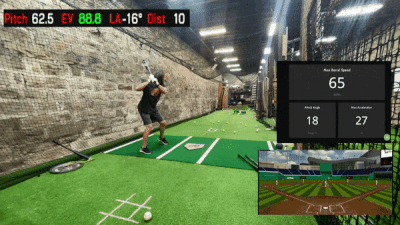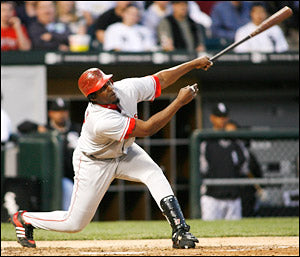Before we begin, I want to clarify that I am not a medical professional or a doctor. If you experience any pain or discomfort while throwing, it's important that you seek the help of a professional. The aim of this blog is to educate baseball and softball overhand throwers on the best practices for managing player health.
On Monday night, I hosted my first Spinner Arm Care Talk on Twitter Spaces. If you missed it, don't worry! It will be posted on my Podcast soon (hopefully). Josh Rudd, the leader of the #armcare revolution, joined in the talk and made a very important point - "It's about more than just pitch counts."
Pitch counts have been receiving a lot of attention lately thanks to Josh, and he's absolutely right. While managing pitch counts is crucial, there's much more to injuries than just the number of pitches thrown in the game. In this blog, we'll discuss four key points that outline a more holistic approach to throwing health and safety
Throw More, Pitch Less
Tournament baseball and showcases are here to stay. As long as there's money to be made and people continue to buy the product, they'll continue. Young players are pitching more than ever before (high stress) and playing catch less than ever before (low stress). Many players that I interact with pitch and play on the weekends with high volumes of high stress throwing, and then throw only once during the week before playing again on the next weekend.
This is the exact opposite of what you should be doing. Throwing volumes should be 75% low-intensity catch play and 25% high-intensity competition reps. All players are doing today is competing with a volume of high-intensity reps that is way too high for their throwing endurance of low-intensity reps.
If you're competing on the weekends, you should be playing catch at least four days a week.
Get Stronger
I don't mean to sound like an old man yelling at clouds, but in the past, young people had opportunities to improve their strength by engaging in physical activities that emerged in their everyday environments they played in like riding bikes, climbing trees, jumping off rocks, playing tag, monkey bars, and much more. Unfortunately, these opportunities are not as widely available today.

If you can't provide these opportunities for strength to emerge for young people, they need to get in a gym and create similar opportunities through weight training. Every week, we host more than a dozen young players in our youth academy aged 9-12 where they complete the following lifts:
- Deadlift (Picking up heavy things)
- Box Drop-ins (Landing from elevated platforms)
- Farmers Carry (Carrying heavy things while walking)
- Sled Push (Pushing heavy things)
We also meet a couple of times a week to play 3 on 3 basketball to get our reactive agility work.
Develop Healthy Arm Care Habits
Arm care habits are like tooth brushing habits. Brushing your teeth every day doesn't guarantee that you won't get cavities, but it greatly reduces the likelihood of getting them compared to never brushing your teeth or brushing them sporadically.
Healthy arm care habits can include but are not limited to band exercises, wrist weight exercises, Spinner stabilization exercises, low-intensity weighted ball throws, and water bag carries, to name just a few. It's good practice to hit on a couple of these exercise buckets daily as well as pre-throwing before competition.
Again, this doesn't guarantee that you won't get hurt, but it's good habit to minimize the likelihood of injury.
Manage Pitch Counts
Finally, we arrive at the pitch count discussion. Yes, you should absolutely acknowledge that pitch counts and high-intensity throwing should be managed within competition, especially at the lower levels. While not perfect, MLB pitch smart guidelines is a good place to gain an understanding of the limitation of high intensity throws per age division as well as amount of rest before high intensity throws again.
As a simple general rule, I tell our parents that however many pitches are thrown, that is the hours of rest needed before high intensity throwing again. Again, not a perfect solution but an idea to better inform decisions.
The only problem is that you probably aren't getting an accurate measurement of the high intensity throws from just pitch counts. Did you warm up before the game? Did you warm up between innings? All of these throws factor into chronic workload.
Last season, I had our facility players wear their Pulse Throw sensors during the games to get a true sense of how much they actually threw on game days. The results shocked me. On days where they would throw 75 pitches in a game, not outrageous right? They would have close to 150 high intensity throws with often more than 200 throws on the day!! It was insanity, and very eye opening. You are throwing way more than you think you are, at least doubling the amount of rest/recovery/low intenisty throwing you need that you aren't getting
Conclusion
The key takeaway is that players should adopt a more well-rounded approach to their throwing health and safety, rather than just focusing on pitch counts. They should prioritize low-intensity catch play over high-intensity competition reps and ensure that they play catch at least four times a week. Additionally, they should focus on improving their strength either through opportunities available in their environment or through weight training. Developing healthy arm care habits is also crucial, including exercises like band exercises, wrist weight exercises, Spinner stabilization exercises, low intensity weighted ball throws, and water bag carries. Lastly, managing high-intensity competition workloads, not just pitch counts, is important for players to reduce the likelihood of injury.
By following these four key points, players can take a significant step towards reducing the likelihood of arm injuries. It is important to note that this is not a guaranteed solution, but it is good practice to ensure that players are doing everything they can to minimize the risk of injury. As the issue of arm injuries in amateur baseball and softball is complex and multifaceted, it will require a more comprehensive and holistic approach to solve.








